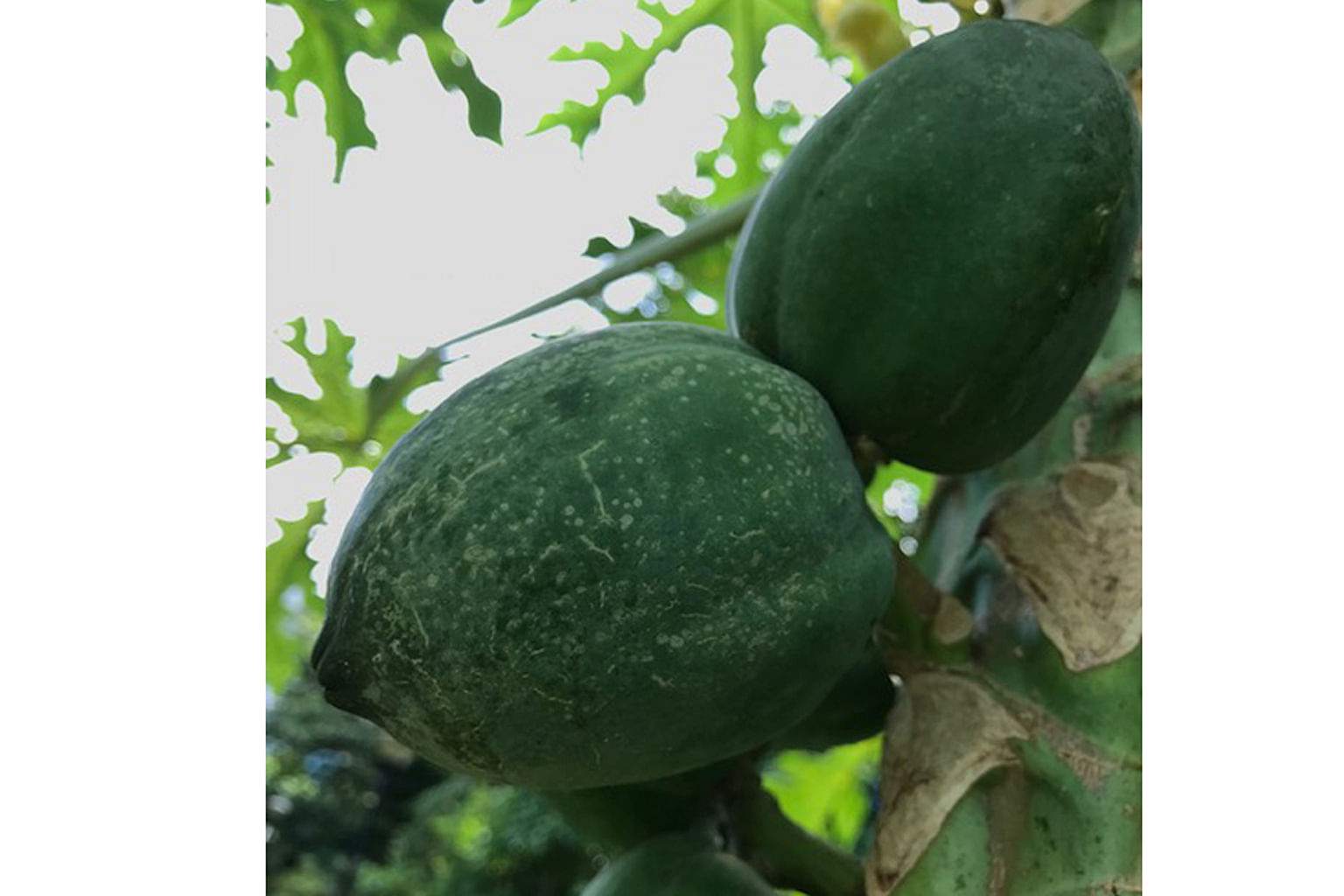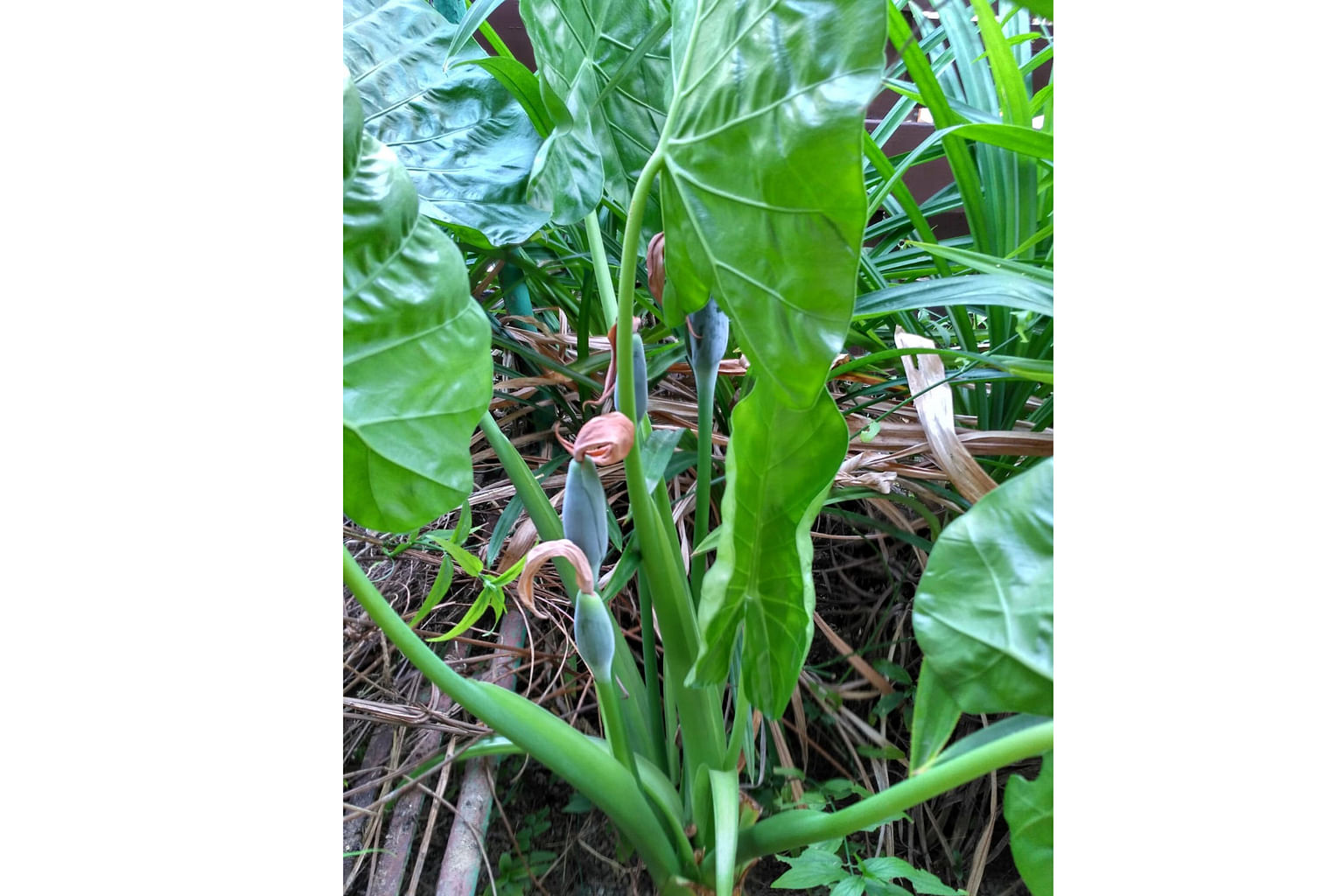Partially decomposed compost attracts millipedes
I have a 1.5m by 0.8m plot for my bamboo. Every morning, there will be 20 to 30 millipedes crawling around the plot. If I turn the soil around, there will be easily another 40 to 50 millipedes unearthed. I have used insecticides, but the situation has not improved. How can I get rid of the millipedes permanently?
Russell Tan
Locally, a proliferation of millipedes in the garden often occurs when there is an increase in organic matter rich in carbon.
The most common instance encountered is where there is extensive use of partially decomposed compost made from wood waste as a mulch around the root zone of plants.
It is common to find a few millipedes in the garden. Being decomposers, millipedes will feed on partially decomposed compost and their population often increases when there is more food.
Insecticides are generally not very effective in eradicating them.
The most sustainable approach in the long term is to either reduce or avoid the use of partially decomposed compost or allow the material to break down further in a remote corner of the garden before using it.
Millipedes are reported to be attracted to light traps that you can build on your own. Such devices are based on a pit-fall trap with an LED light fitted on its cover. You can turn to the Internet to find out how to build such traps.
Uneven ripening and pests affecting papaya

I planted this papaya plant in January last year. It grew very well and, a few months later, began to flower and bear fruit. However, when I cut some of the fruit, they were not edible (above). Why did the fruit turn out this way? All the fruit were also seedless - why did this happen? The tree continued to flower, but the subsequent fruit were not big (below) and had white lines and substances. What are these substances and how do I get rid of them? I tried to wrap the fruit up, but it did not help.
Chua Suan Choo

The lack of seeds in your papaya fruit could be due to a phenomenon called parthenocarpy, which is fruit development occurring without pollination. It could also be due to incomplete pollination. For the latter case, you may want to reduce the use of chemical pesticides in the growing area so that pollinators are not adversely affected.
As for the fruit that appeared inedible, it could be a case of uneven ripening, which can be seen in the uneven consistency of the fruit flesh. A portion on the side is still hard while the rest has softened. This could be caused by the plant being exposed to high temperature stress, which affected the fruit development and ripening processes.
As such, you may want to harvest unripe, full-size fruit and allow them to ripen indoors where the temperature is cooler and more constant.
For the white markings, they could be due to feeding damage caused by sucking or rasping pests like thrips and mites.
Examine the fruit closely and use a magnifying glass to confirm the causative agent. You can follow up with the appropriate environment-friendly pesticide, such as neem oil or white summer oil, to manage the pest population, keeping it low to reduce damage of the fruit's appearance.
Bagging the fruit may not be able to exclude infestation by small sap-sucking pests.
Elephant's Ear a common plant

There is a plant (above) growing in my backyard and its flowers have dried up, leaving behind seed pods. What plant is it?
Mary Lee
The plant is commonly known as the Elephant's Ear and botanically known as Alocasia macrorrhizos. It can grow into a rather large specimen when given good light and moist, fertile soil.
Some people grow it as an ornamental plant in the garden for its stature. Its spade-shaped leaves can get rather large and are sometimes used in displays. Its thick stem and corm can be eaten when cooked thoroughly.
Its seeds are probably carried and dispersed by birds via their droppings. Hence, it is common to see plants arising spontaneously in the garden. Large colonies can also be seen growing in wastelands and the edges of forests in Singapore.
Magenta plant yields an edible food dye

What is this herb (above) and how can I use it in food?
Caroline Low
The plant is commonly known as the Magenta plant. Its botanical name is Peristrophe bivalvis. As its common name suggests, an extract of its leaves yields a magenta dye which can be used to colour food.
The plant is also used in traditional Chinese medicine.
The concoction made from boiling the fresh leaves in water is reportedly used to treat issues such as cough and bronchitis.
Sansevieria needs brighter light conditions

I have been keeping these indoor plants (above) I bought from the market. I like them as they are growing well and easy to look after. Are they called Mother-in-law's tongue? Can they help to clean the air indoors?
Irene Lim
The plants belong to the genus Sansevieria.
The taller plant is botanically known as Sansevieria trifasciata (Laurentii cultivar) and, due to the shape of its leaves, it is commonly known as the Mother-in-law's tongue.
The shorter plant is likely the variegated version of the Hahnii cultivar.
The shorter leaves are arranged in a tight rosette, hence its common name, the Bird's Nest Sansevieria.
Although both plants are often sold as indoor plants, they do better if grown under brighter light conditions.
Ideally, there should be at least four hours of direct sunlight daily if the plants are grown in a high-rise apartment.
The lack of light will lead to the production of long, flopping leaves.
The plants are best treated as ornamental display plants.
Their purported air-purifying abilities are limited due to the sparse number of plants in a room.
If you want better air quality indoors, you might want to invest in an air purifier.
• Answers by Dr Wilson Wong, an NParks-certified practising horticulturist and park manager. He is the founder of Green Culture Singapore and an adjunct assistant professor (Food Science & Technology) at the National University of Singapore.
• Have a gardening query? E-mail it with clear, high-resolution pictures of at least 1MB, if any, and your full name to stlife@sph.com.sg
